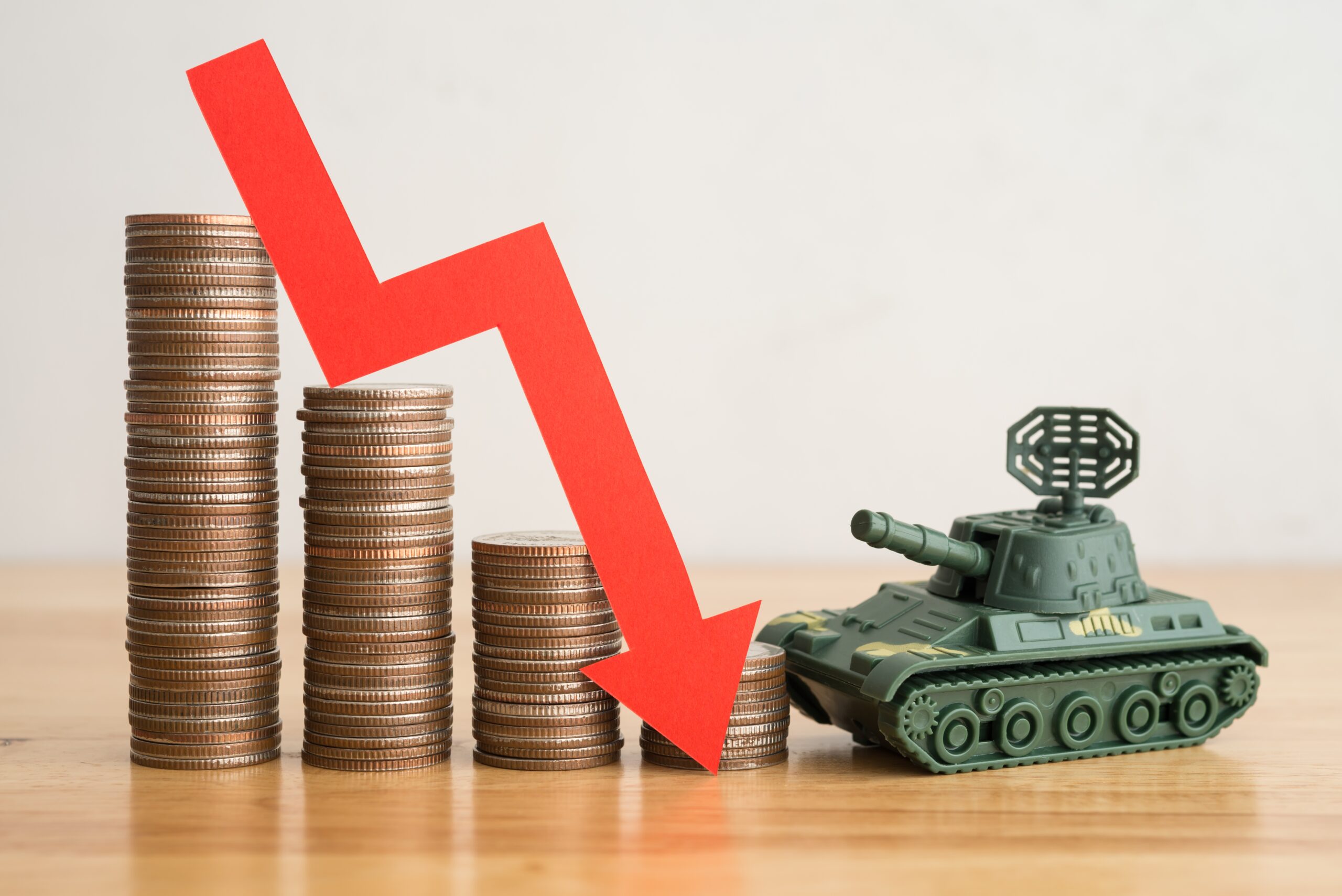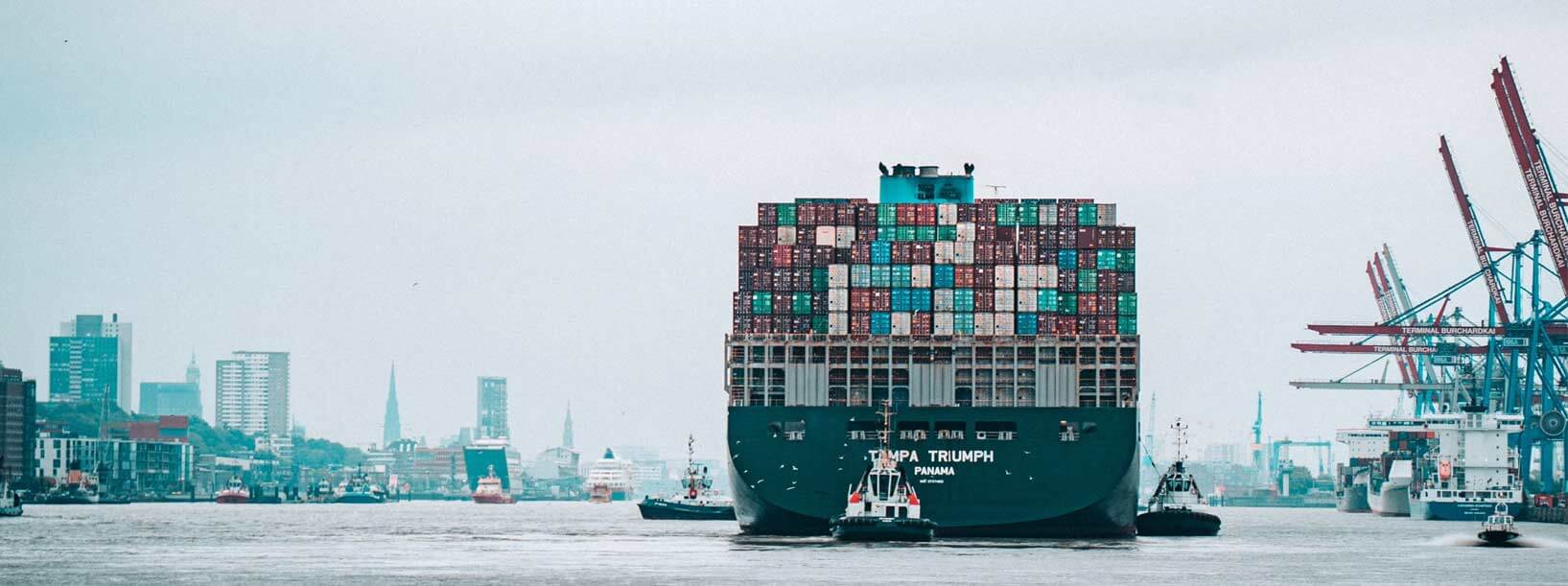Inflation in the MEA region: A Fragile Ecosystem
Since the global financial crisis of 2007-2008, inflation has been on the watch in most economies. Its importance has been amplified as countries, investors and non-investors must understand inflation and its causes due to the fact that it can affect the price you pay of everything, from your daily cup of coffee to a share of common stock.
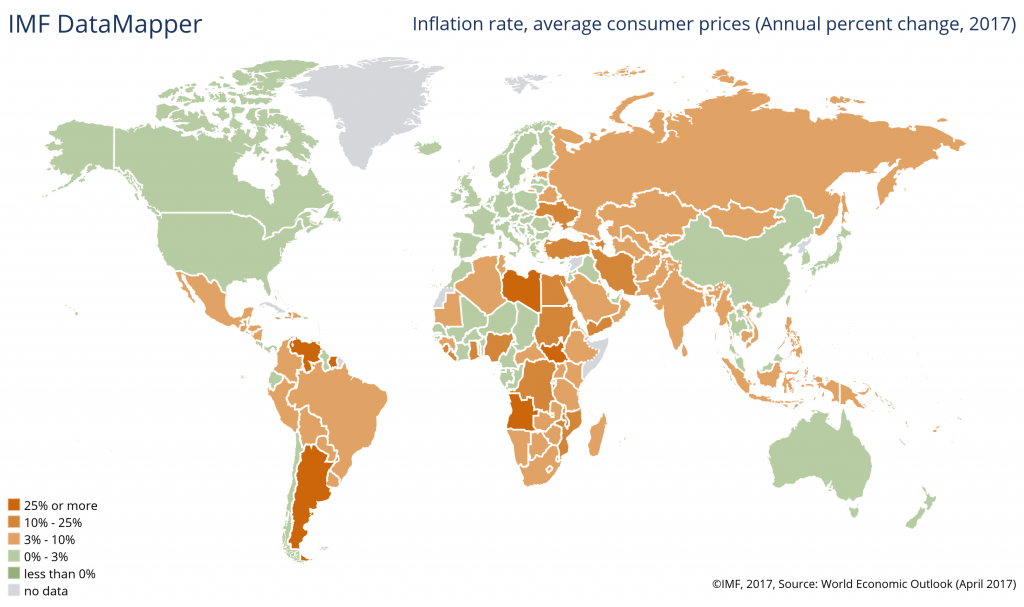
What is inflation?
Inflation occurs when prices rise, and a currency becomes worth less than it was before. When a country’s currency loses value, its exchange rate weakens compared to others directly affecting its purchasing power both within the country and in international trade.
High inflation can be caused by an increased demand for goods in conjunction with a lack of supply. Basic economic theory tells us that when more people want the same good, its price increases. Inflation can also be triggered when the value of your currency decreases. This can be caused by governments increasing the total money supply (sometimes known as printing too much money) or by a devaluation in a net importer country.
As prices increase, if wages don’t keep up, workers lose their purchasing power ultimately reducing their standard of living. If inflation becomes too high, especially for an extended period, it can create major repercussions on the econometric-social structure of a nation, eliminating the middle class. [2]
In a perfect storm of economic disaster, a nation might significantly face both factors at the same time. This would lead to a monetary phenomenon known as hyperinflation.
Hyperinflation
In 1956, Phillip Cagan, an economist working at America’s National Bureau of Economic Research, described hyperinflation as a period in which prices rise by more than 50% per month; often resulting in a revolution, war or political transition. The first recorded episode of such happening occurred between 1795 and 1796, in revolutionary France. [3]
As of 2017, African and Middle Eastern countries tend to have the highest average inflation rates across the world; 7 out of the highest 10 inflation rates were from countries located on the African continent and the Middle East region. South Sudan is the highest inflation in the region with 111.4% annual inflation, then the Democratic Republic of the Congo (50%), Libya (35%), Egypt (29.7%), Angola (23.3%), Yemen (23%) and Sudan (21%). [4]
Reasons of high inflation in those regions can be summed up in the following points:
Global food prices falling
Africa has always been called the food basket of the world since many of its economies have a high dependence on exporting raw materials and food. On the other hand, food prices (according to the US dollar)have been steadily falling since 2011 and are well below the crises levels found in 2007 and 2008. A lack of foreign currency in these nations caused inflation through the unmet need for currencies to import.
Droughts
In the 2015 and 2016 harvesting seasons, southern and eastern Africa faced one of the worst droughts seen in 50 years, severely cutting the supply of food and triggering inflation in their respective countries.
Wars and conflicts
Wars in countries such as Syria, Libya, Yemen, South Sudan and Nigeria, have created devastating effects on these respective countries. Massive currency depreciation makes the country’s exports cheaper for their neighboring countries to import, diminishing the local supply nationwide.[5]
Poor government execution
The central bank is the main institution combating inflation. In an attempt to minimize the business cycle volatility and fluctuations, there are a few methods used to target inflation.
Tactics used when attempting to stabilize the currency
– Increasing interest rates
– Increasing reserve requirements
– Calling in debts that are owed to the government
However, poor government executions paired with bad economic conditions have lead governments to seek safe haven in short-sighted actions; affecting inflation in return for having monetary liquidity. For instance, Uganda, Zimbabwe and Somalia have been overprinting money to cover their debt causing huge currency devaluation. In late July of 2008, a Zimbabwean dollar was worth 688 trillion times less than it was in August 2006 after printing so much money to fund budget deficits which propelled inflation rates to skyrocket. Since 2009, Zimbabwean currency has no value and most transactions today are conducted in U.S. dollars or South African Rand.[6]
South Sudan
In the past year, economic performance has continued to deteriorate in South of Sudan because of the civil war, the sharp fall in oil production, the collapse of global oil prices, unemployment and a decline in agriculture production. This has meant that the government is unable to raise the resources required to finance peace-related costs.
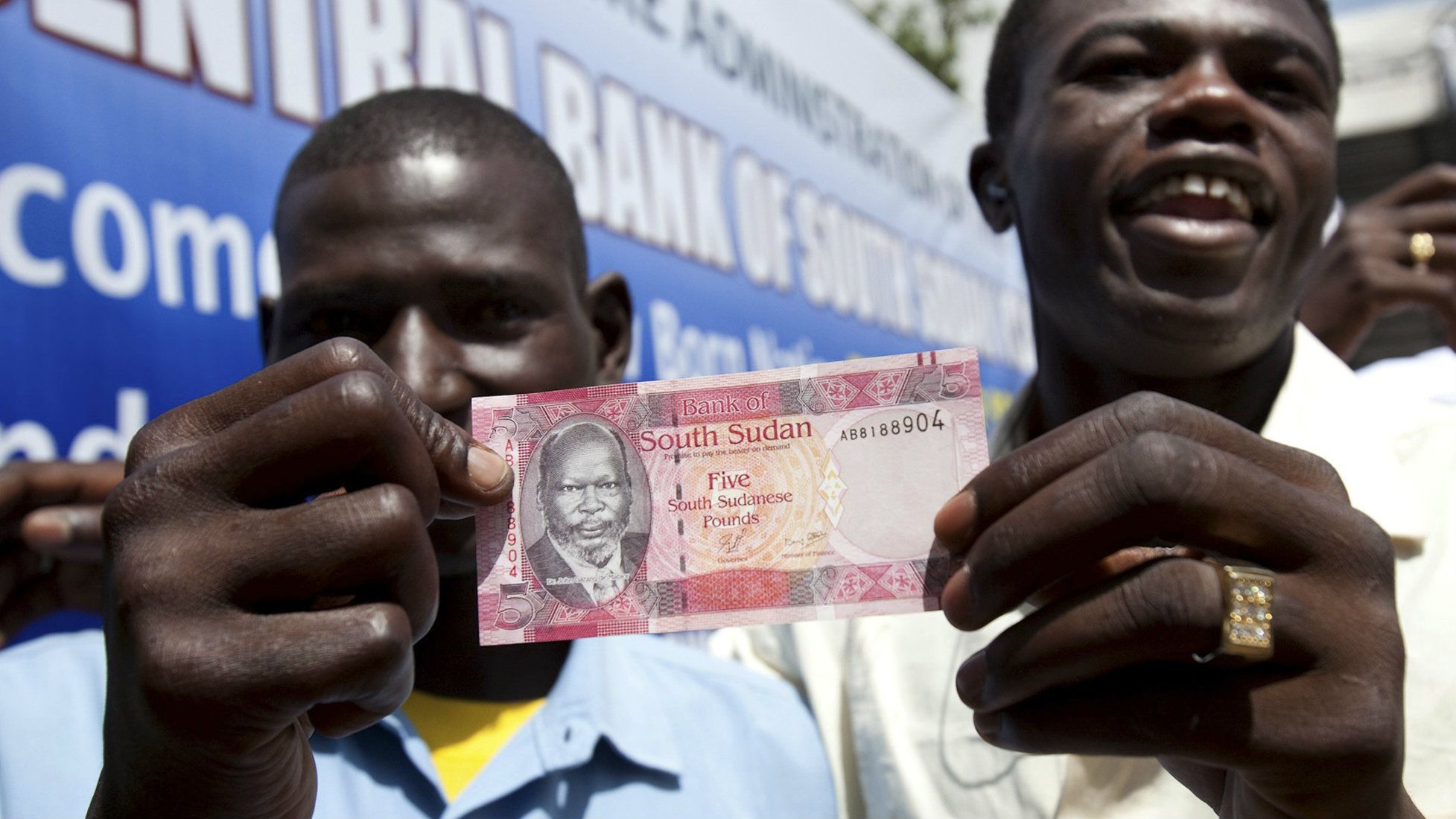
Food insecurity and hyperinflation remain challenging. A famine was declared in February 2017 [7]. The annual Consumer Price Index (CPI) increased in the Juba and Wau regions, by 143% and 109% respectively, from September 2016 to September 2017 [8].
The Bank of South Sudan was overprinting money to cover the deficits associated with wardriving inflation to peak at 550% in September 2016. As a direct cause of inflation, when printing money slowed in recent months, inflation decelerated to 102% on September 2017.
Congo
The Democratic Republic of the Congo (DRC), the largest country in Francophone Africa, is still recovering from a series of conflicts that occurred in the 1990s causing a lasting economic and social tumble.
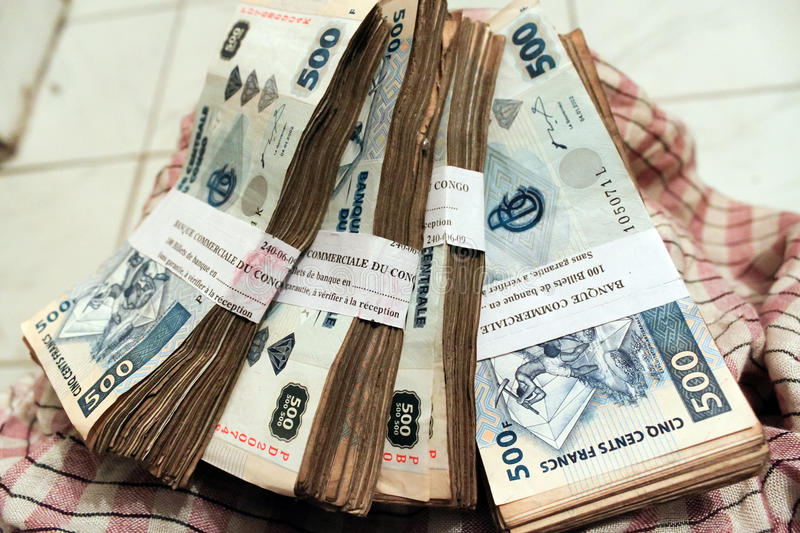
A decline in prices and a decreasing global demand for raw materials exported by the country, (particularly copper and cobalt; which account for 80% of its export revenue) caused the GDP growth to fall to its lowest since 2001 to 2.4% in 2016. This shock affected the external accounts and caused the Congolese franc to drop by 31% against the dollar in 2016; fueling inflation to 24%. [9]
Persistently low commodity prices and high government deficits in 2017, exacerbated the franc hitting inflation to 50%. Adding further pressure on inflation, in August 2017 the government banned imports of carbonated drinks, cement, iron and sugar. Headline inflation increased from 67.5% year-on-year in July to 70.8% year-on-year in August. [10]
With the government doubling its base interest rate, recovery of commodity prices and the mining output; Congo’s central bank expects inflation in 2018 to fall to about 28%.
Zimbabwe 2008… and again in 2017
In 2008, Zimbabwe suffered one of the most interesting, which happened to be the second most severe, episodes of hyperinflation in recorded history. Zimbabwe’s annual inflation rate, which peaked in November 2008, reached 89.7 sextillions (10^23) %. At this point, prices were doubling every 24.7 hours.
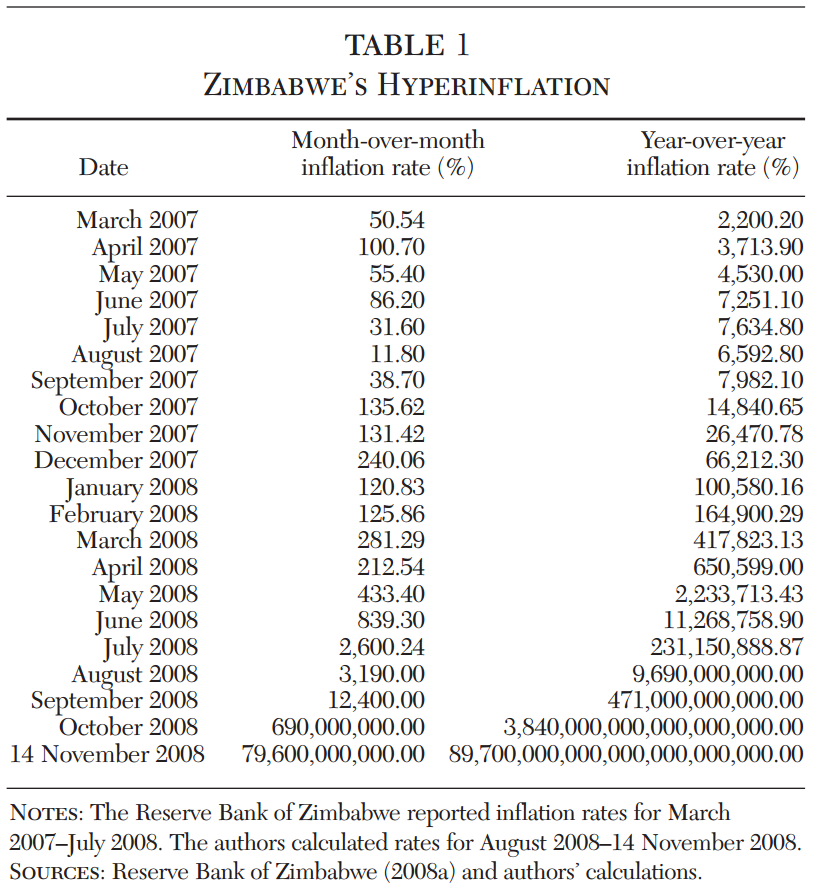
At the peak of Zimbabwe’s hyperinflation episode in November 2008, Zimbabweans refused to use the Zimbabwe dollar. The government gave up and decided to dollarize the economy and accept the US dollar as the unit of account for government finance.
In January 2009, Zimbabweans were allowed to use the US dollar, the euro, and the South African Rand. However, teachers and civil servants were still being paid in Zimbabwean dollars & prices in shops and restaurants were still in Zimbabwean dollars.
The black market thrived in this period, with hyperinflation, anyone who held a Zimbabwean dollar struggled to change it immediately or else would lose all of what they had.
Again in 2016, the central bank printed so-called bond notes, in which they said carry a value equal to the dollars, surging the money supply up 36% in 2017. The notes were sold on the underground market. The Zimbabwe National Statistical Agency (Zimstat) said this means prices, as measured by the all of the items included in the consumer price index (CPI), increased by an average of 3.52% in the 12 months leading up to January 2018. [11]
Shahd Ezzat, Business Research Analyst at Infomineo.
[1] https://www.thebalance.com/what-causes-a-high-rate-of-inflation-357608
[3] https://www.economist.com/blogs/economist-explains/2018/02/economist-explains-5
[4]IMF Database
[5] https://www.africaresearchinstitute.org/newsite/blog/silent-crisis-food-price-inflation-africa/
[6] https://www.thebalance.com/what-causes-a-high-rate-of-inflation-357608
[7] http://blogs.worldbank.org/africacan/taming-the-tides-of-high-inflation-in-south-sudan
[9] http://www.worldbank.org/en/country/drc/overview
[10] https://home.kpmg.com/content/dam/kpmg/za/pdf/2017/12/DRC-2017H2.pdf
[11] https://www.herald.co.zw/annual-inflation-rate-up-352-percent/
You may also like
Warning: Undefined variable $content in /var/www/sdomains/nexatestwp.com/infomineo.nexatestwp.com/public_html/wp-content/themes/infomineo/single.php on line 235
Warning: Undefined variable $content in /var/www/sdomains/nexatestwp.com/infomineo.nexatestwp.com/public_html/wp-content/themes/infomineo/single.php on line 235
Warning: Undefined variable $content in /var/www/sdomains/nexatestwp.com/infomineo.nexatestwp.com/public_html/wp-content/themes/infomineo/single.php on line 235
Warning: Undefined variable $content in /var/www/sdomains/nexatestwp.com/infomineo.nexatestwp.com/public_html/wp-content/themes/infomineo/single.php on line 235
Warning: Undefined variable $content in /var/www/sdomains/nexatestwp.com/infomineo.nexatestwp.com/public_html/wp-content/themes/infomineo/single.php on line 235
Warning: Undefined variable $content in /var/www/sdomains/nexatestwp.com/infomineo.nexatestwp.com/public_html/wp-content/themes/infomineo/single.php on line 235






